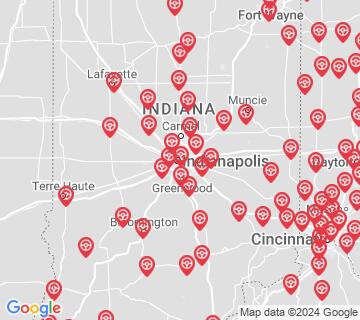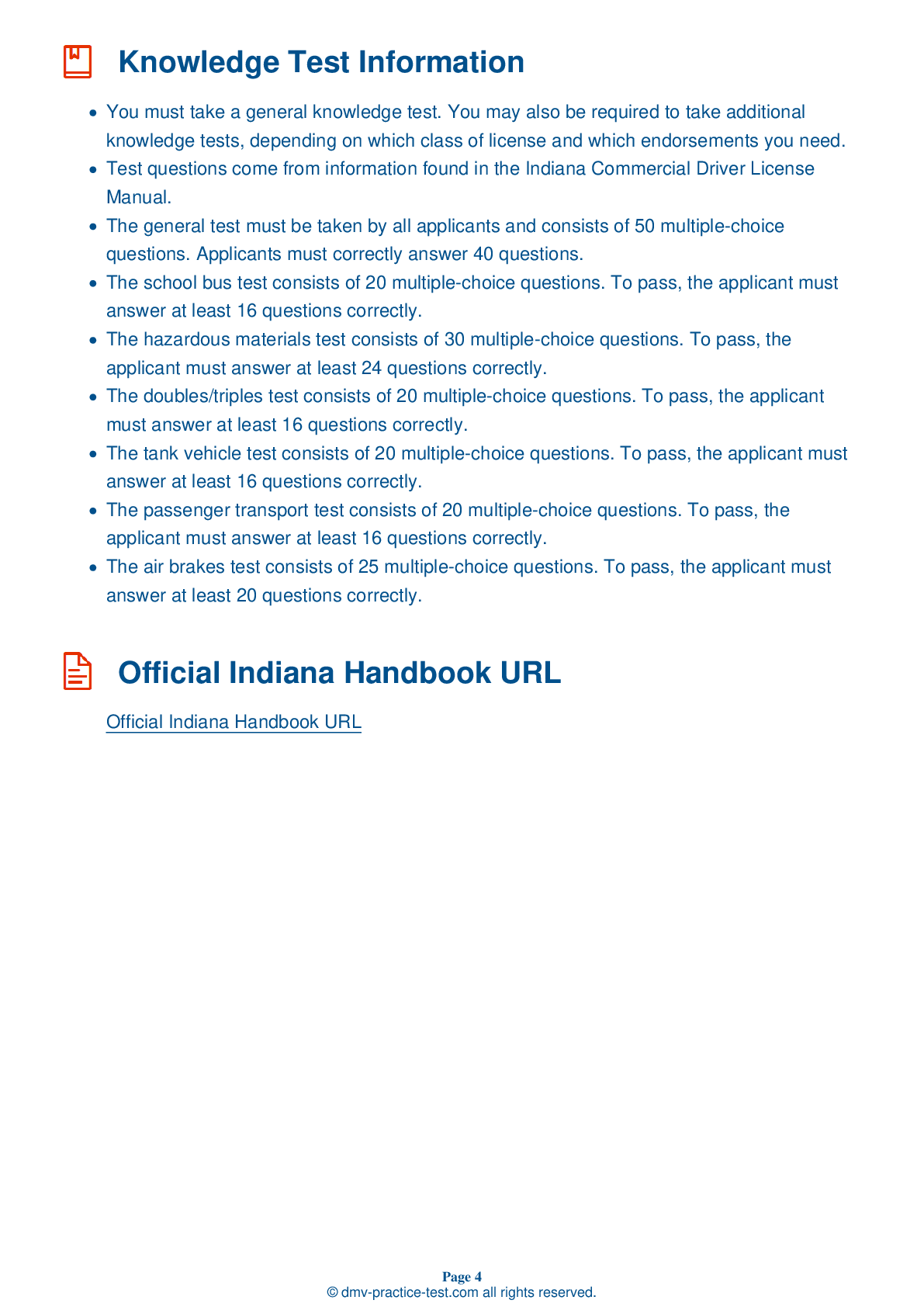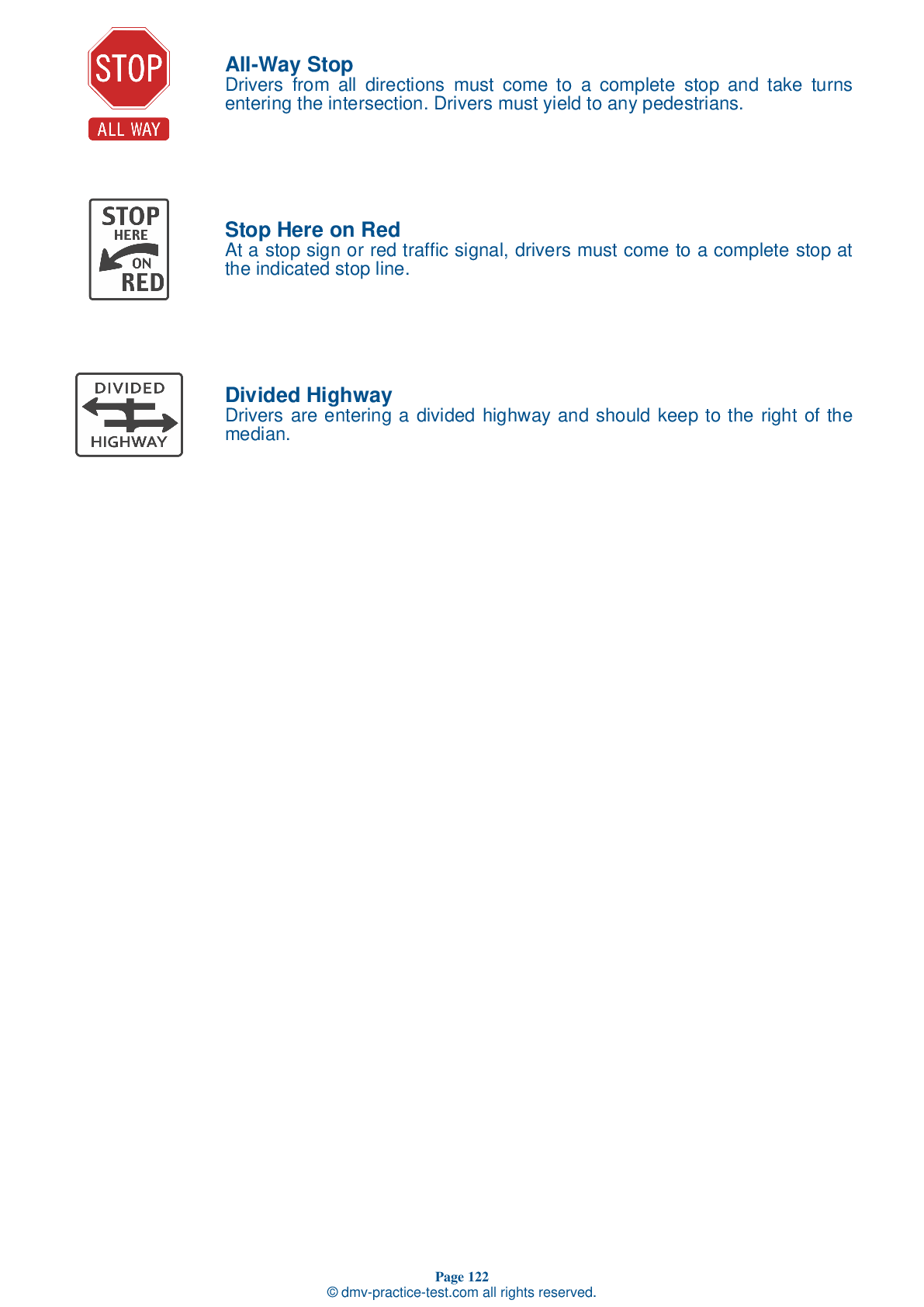Knowledge Test Class A #1
Class A Driving Test | Indiana 2025 #1 Page 3 of 7
Train for FREE online with our Indiana class A license test. The official exam test consists of several obligatory parts, with all of them checking your knowledge of different blocks of road rules. If you need to obtain a IN CDL class A permit in 2025, practice as much as possible. Free sample tests published on our website will help you check and improve your knowledge and boost your grades. Please bear in mind that CDL class A requirements may vary from state to state.
50
40
20
15 . Headlights:
Should always be on the high beam setting.
To improve visibility, you should use high beam headlights at night where it is safe and legal to do so. However, the glare from high beam lights can blind other drivers. You should dim your lights to their low beam setting when driving within 500 feet of an approaching vehicle.
16 . When making a turn, you do not need to:
Signal early.
Be sure to activate the appropriate turn signal well in advance of a turn or lane change. Signal continuously throughout the turn and make sure to cancel the signal after the turn is completed, if your vehicle doesn't have self-canceling signals.
17 . If a person has a hazardous materials endorsement and renounces their U.S. citizenship:
They must surrender their hazardous materials endorsement within 24 hours.
If applicable, you must surrender your hazardous materials endorsement within 24 hours of renouncing your U.S. citizenship.
18 . When using the controlled braking method in an emergency situation, you should:
Apply the brakes with minimal pressure.
The controlled braking method for emergency stops involves applying the brakes as hard as you can without locking the wheels. Keep steering wheel movements small when braking in this way.
19 . You should always be able to stop within:
30 seconds of hitting the brakes.
You should always make sure that your vehicle will be able to stop within the area of the road that you are able to see. This means that you must slow down whenever conditions reduce visibility.
20 . When driving, a driver should:
Not be concerned with what is happening in front of their vehicle.
It is essential for a CMV driver to be aware of what is happening on all sides of their vehicle.
21 . If you leave the scene of an accident involving a CMV, you will lose your license for at least:
10 years.
Leaving the scene of an accident involving a CMV will result in the loss of your CDL for at least one year on a first offense. On a second offense, you will lose your CDL for life.
Search the best driving school in your neighbourhood
2025 Indiana | Frequently Asked Questions
To secure a CDL Doubles/Triples endorsement in Indiana, you must already have a valid CDL. Then, you'll need to pass the Doubles and Triples Endorsement Knowledge Test. This test covers topics like coupling and uncoupling, inspecting doubles and triples, and handling. After passing the test, you can add the endorsement to your CDL.
To obtain a CDL Doubles/Triples license, you must first have a Commercial Driver's License (CDL). You are then required to pass the Doubles/Triples Endorsement Knowledge Test. This test includes understanding of coupling and uncoupling, inspecting doubles and triples, and handling these vehicles. After successfully passing the test, you can add the endorsement to your CDL.
While Indiana does not specifically require specialized experience or training for a CDL Doubles/Triples endorsement, it's beneficial to have training in handling these types of vehicles. You must pass the Doubles/Triples Endorsement Knowledge Test, which covers topics like coupling and uncoupling, and inspecting doubles and triples. So, practical experience or training would help you pass the test.
Yes, to receive a CDL Doubles/Triples endorsement in Indiana, you must pass the Doubles/Triples Endorsement Knowledge Test. This written exam covers topics such as coupling and uncoupling, inspecting doubles and triples, and the proper procedures for driving these types of vehicles. After passing the test, you can add the endorsement to your CDL.
There's no specific skills test or maneuvers to showcase for the CDL Doubles/Triples endorsement. However, you need to pass the Doubles/Triples Endorsement Knowledge Test. This test evaluates your understanding of coupling and uncoupling, inspecting doubles and triples, and handling these vehicles. The CDL handbook provides all the necessary information for this test.
No, it's not permissible to operate double or triple trailers in Indiana without a valid CDL Doubles/Triples endorsement. Operating these types of vehicles requires specific skills and knowledge, which are tested during the endorsement process. Driving without the proper endorsements can result in significant fines and penalties, including the suspension of your CDL.
Yes, you can append the CDL Doubles/Triples endorsement to your current Commercial Driver's License (CDL). You don't need to initiate a new application for a CDL, but you will need to apply for the endorsement, pass the knowledge test, and pay any associated fees to receive the endorsement on your existing CDL.
Yes, there are limitations. Drivers with a CDL Doubles/Triples endorsement must adhere to specific rules, including maximum weight limits for trailers and load. They also need to follow rules related to coupling and uncoupling, and inspecting the doubles/triples. Additionally, they must not operate vehicles that exceed the endorsement's specifications. Violating these regulations can lead to penalties or loss of endorsement.
In Indiana, a semi-trailer's maximum length is 53 feet, and the combined length should not exceed 65 feet. For weight, a vehicle with a single or tandem axle can weigh up to 20,000 or 34,000 pounds respectively. The gross vehicle weight (including all trailers) should not exceed 80,000 pounds. These limits may vary depending on specific roads or bridges.
Yes, there are specific safety guidelines. Drivers must check that all couplings are secure, ensure the heaviest trailer is directly behind the truck, and maintain a safe following distance. Additionally, they must take extra care while turning due to off-tracking and avoid sudden lane changes or braking which could cause jackknifing. Regular vehicle inspections are also mandated.




